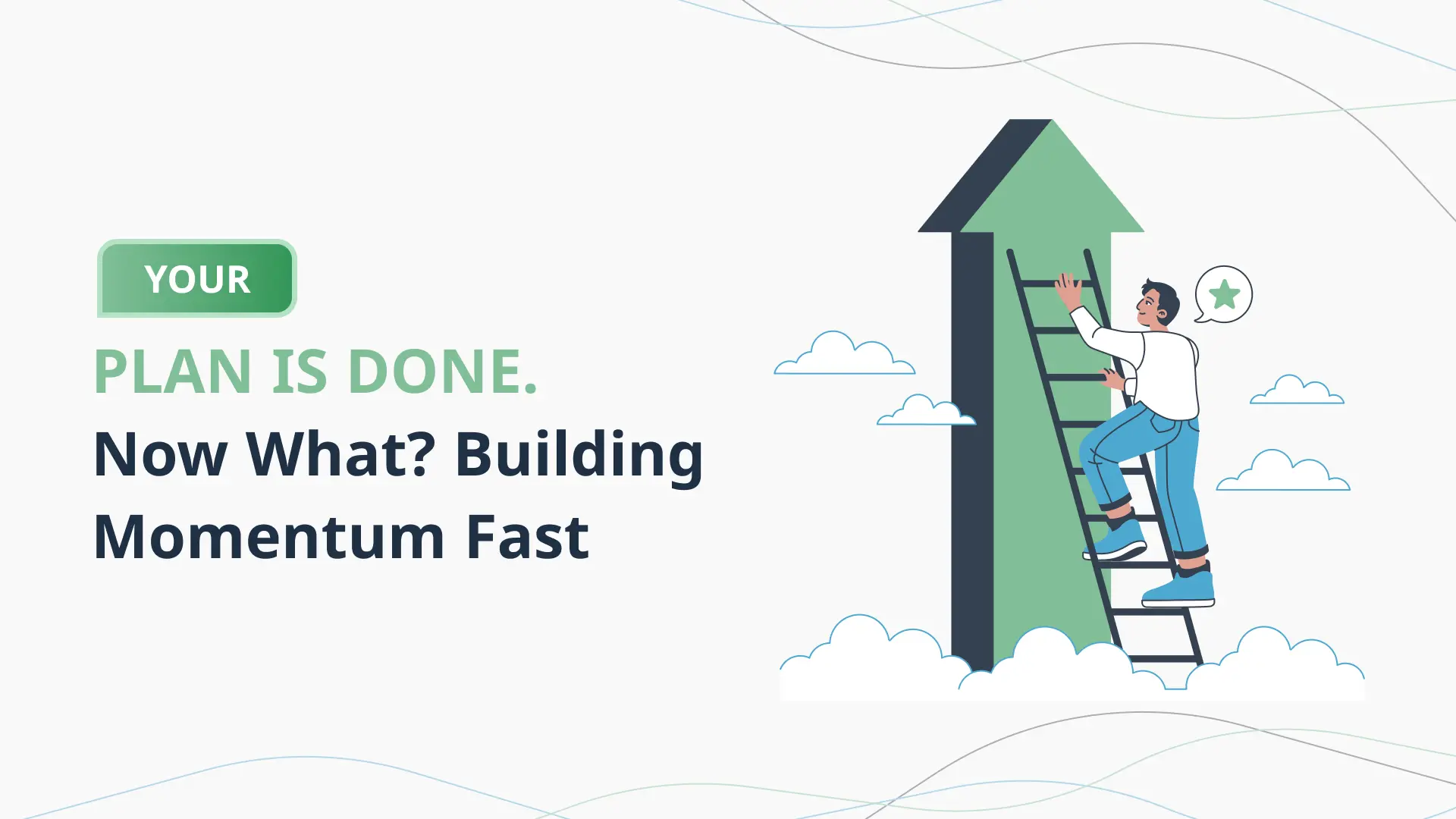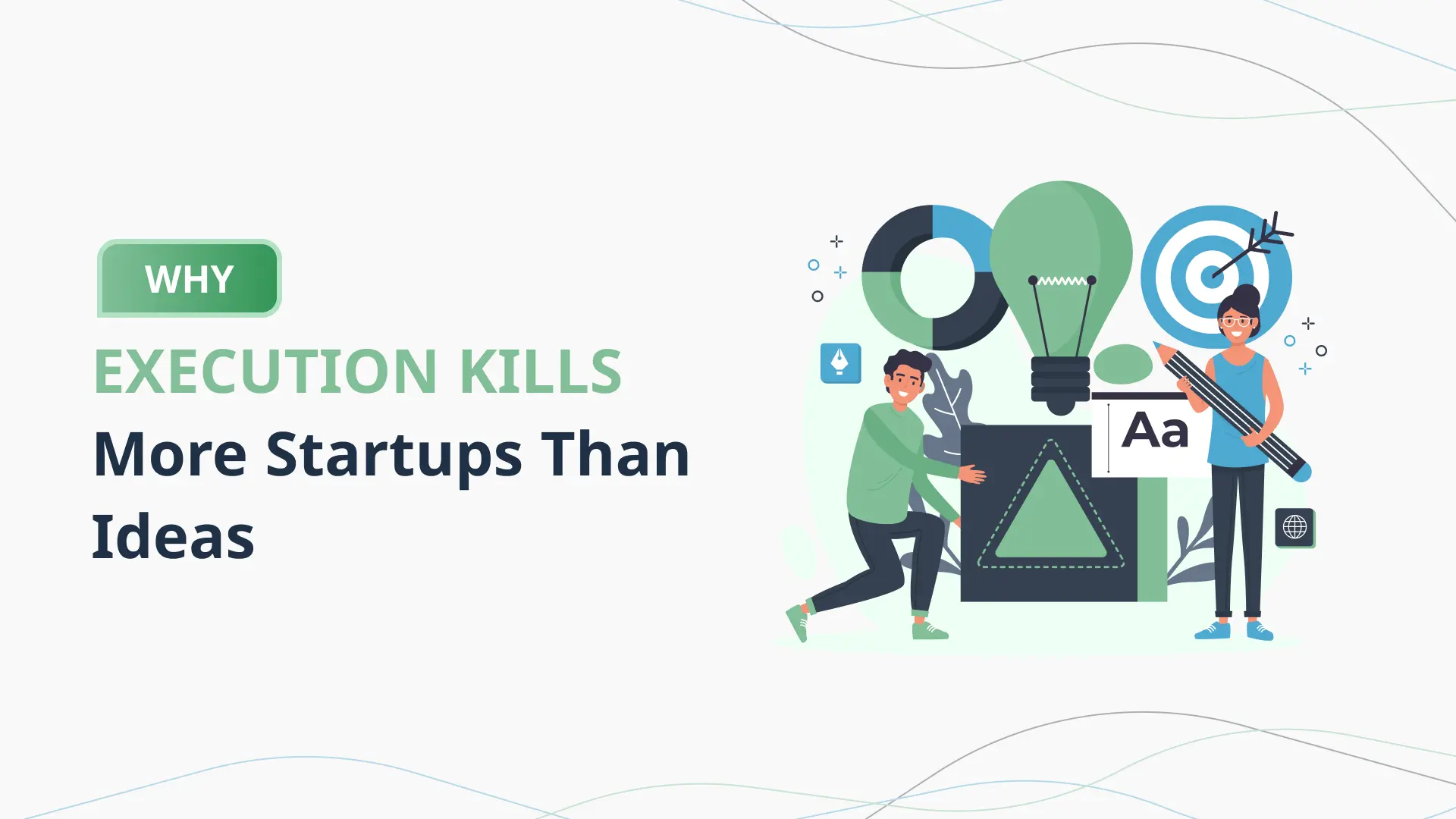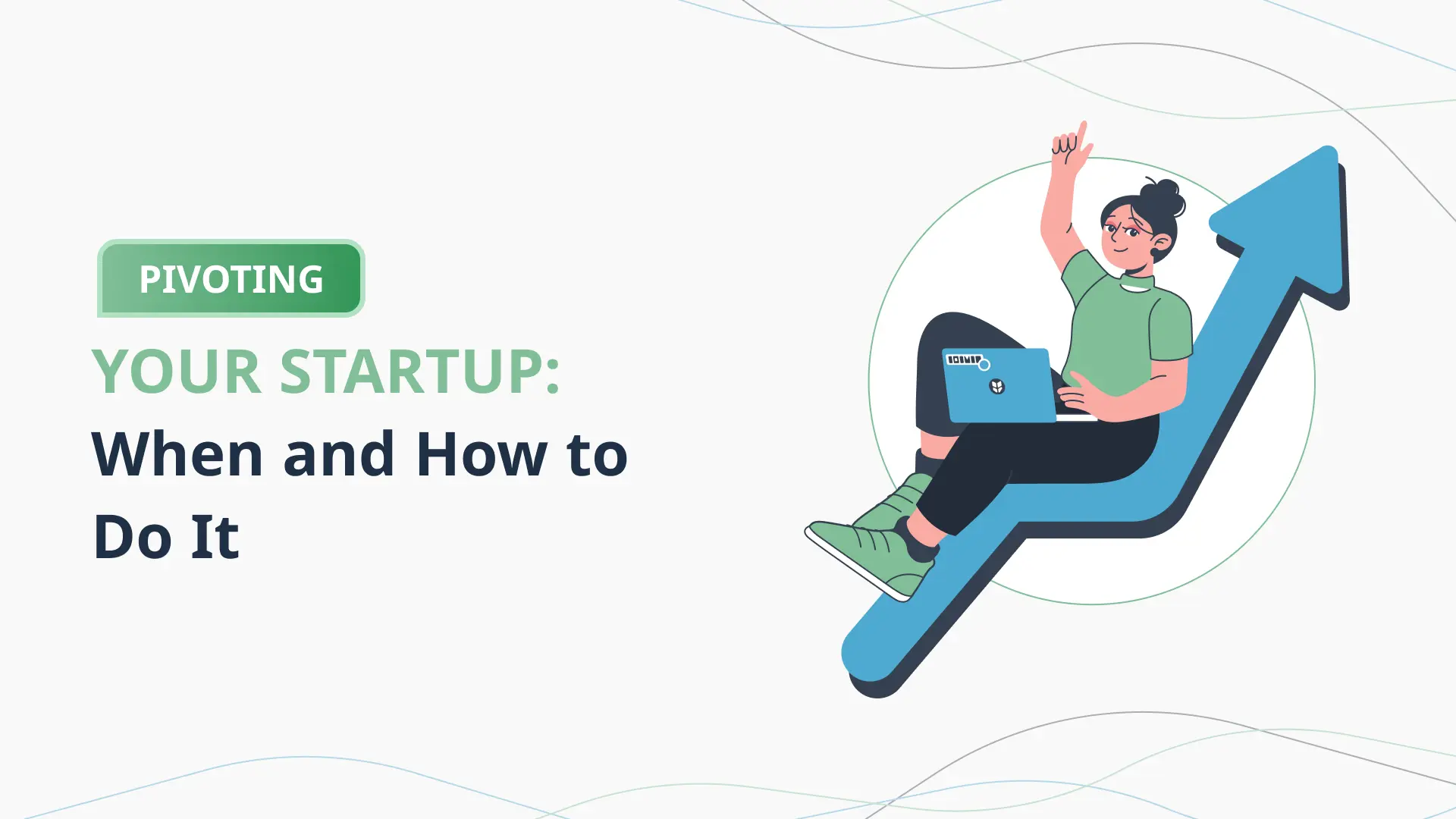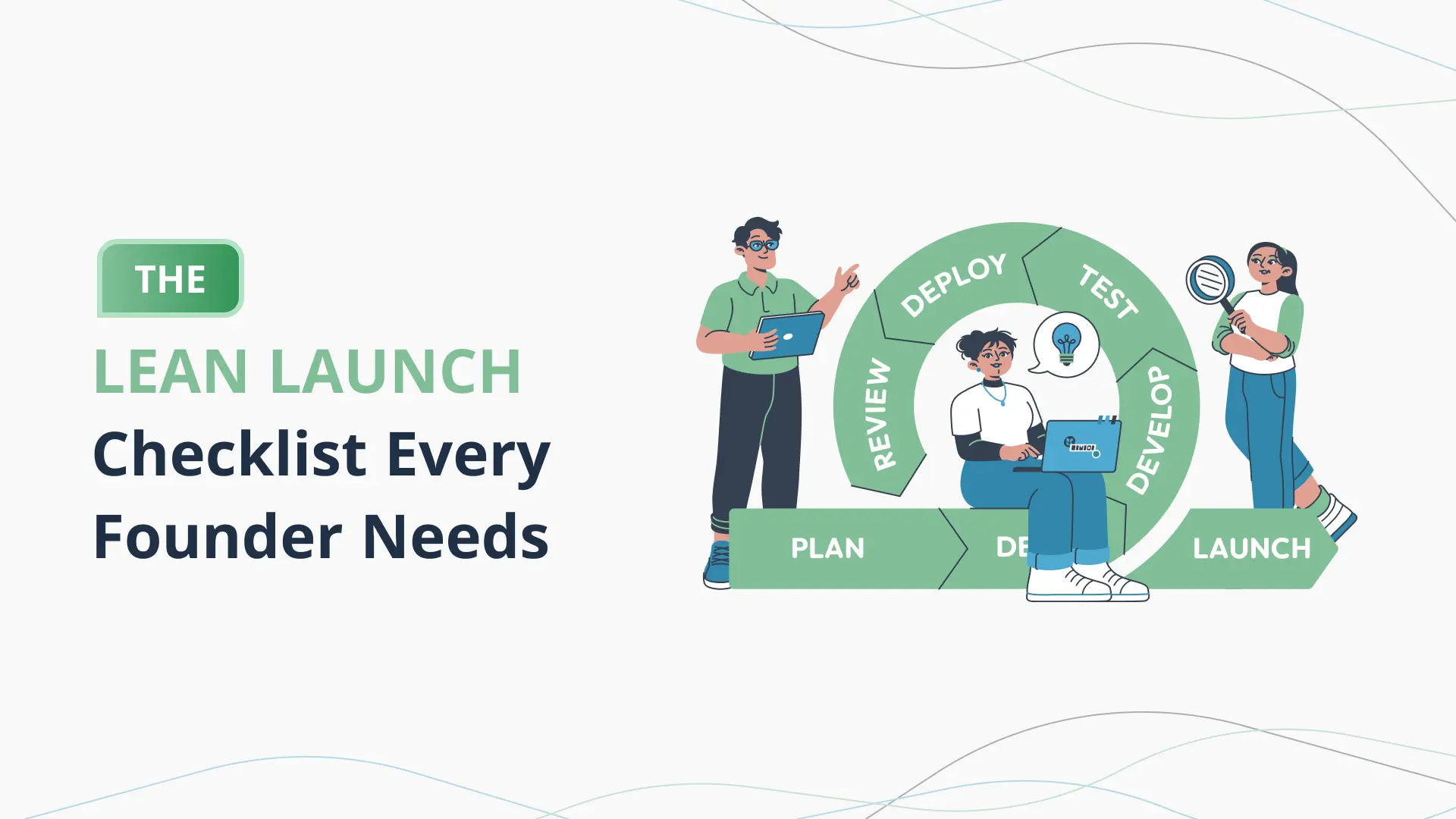How to Predict Revenue When You Have No Sales Yet

Introduction: Predicting Revenue Without Sales Isn’t Guesswork—It’s Strategy
You’ve got your MVP, you’re gearing up for launch, and you’re trying to build a financial model that makes sense.
Then you hit the wall:
“But we don’t have any sales yet… how are we supposed to forecast revenue?”
It’s the classic early-stage founder dilemma.
Investors, advisors—even your co-founder—want to see a revenue plan.
But without transactions, user behavior, or historical benchmarks, it feels like you’re making it all up.
Here’s the truth: revenue forecasting without sales is completely possible—and absolutely necessary.
Not for vanity. Not to impress.
But to:
- Understand your growth potential
- Set smart, trackable goals
- Plan spending and hiring responsibly
- And raise capital with credibility, not guesswork
Because when done right, a pre-revenue forecast shows how you think—not just what you hope.
What This Blog Will Teach You
You’ll learn:
- How to build a bottom-up revenue model—even with zero customers
- What inputs matter (and what to ignore early on)
- How to estimate with logic and clarity, not fluff
- A real founder example of predicting revenue before launch
- How tools like PlanVista simplify this entire process
- How to turn your forecast into an investor-ready plan
Even if your product hasn’t launched, your forecast can still lead the conversation.
Let’s break it down step by step.
Start with a Bottom-Up Model—Not a Market Size Guess
The biggest mistake early-stage founders make when forecasting revenue?
They start from the top down.
“The total market is $10 billion. If we capture just 1%, that’s $100 million!”
It sounds exciting. It makes slides look good.
But to investors—and savvy team members—it’s a red flag.
Because market size doesn’t mean anything unless you can show how you’re getting customers, at what price, and over what time frame.
That’s why pre-revenue forecasting must start from the bottom up.
What Is a Bottom-Up Revenue Forecast?
A bottom-up model builds your revenue based on:
- Actual sales activities
- Realistic acquisition assumptions
- Customer behavior
- Your pricing model
It answers:
- “How many users/customers can we reach?”
- “What % will convert?”
- “What will they pay—and how often?”
- “What’s our churn?”
It doesn’t need perfect data. It just needs logic you can explain.
Step-by-Step: Build Your Bottom-Up Model
- Define your pricing
- Is it monthly subscription? One-time fee? Usage-based?
- Example: ₹1,000/month per user
- Is it monthly subscription? One-time fee? Usage-based?
- Estimate your acquisition funnel
- How many site visitors, leads, demos, or signups do you expect?
- Use early marketing tests or launch projections
- Example: 2,000 site visitors → 5% convert → 100 paying users
- How many site visitors, leads, demos, or signups do you expect?
- Factor in growth rate
- Start small. Assume realistic MoM growth (e.g., 10–15% monthly)
- Scale acquisition only if spend and resources increase
- Start small. Assume realistic MoM growth (e.g., 10–15% monthly)
- Include retention and churn
- Assume some users will drop off. For SaaS, expect 5–10% churn early.
- Build revenue month by month with attrition factored in
- Assume some users will drop off. For SaaS, expect 5–10% churn early.
- Stack revenue monthly
- New users × price
- Subtract churn
- Track cumulative MRR or ARR
- New users × price
Now you’ve got a forecast that explains how revenue will happen—not just how big the market is.
Example: Pre-Launch SaaS Forecast (First 3 Months)
- ₹1,000/month subscription
- 1,500 visitors in Month 1
- 3% conversion = 45 users
- Month 2: 1,800 visitors → 54 new users
- Month 3: 2,000 visitors → 60 new users
- Churn = 10%/month
→ That’s how you get to ₹1,50,000 MRR by Month 3—defendable and logical.
How PlanVista Helps
PlanVista’s startup-ready templates:
- Walk you through pricing, growth, and churn inputs
- Calculate revenue month by month, automatically
- Let you adjust assumptions and test different growth paths
- Keep your forecast consistent across burn, runway, CAC, and cash flow
No spreadsheet wrangling—just numbers you can trust and explain.
Use Traction Proxies to Strengthen Your Forecast
You might not have paying customers yet—but that doesn’t mean you’re starting from zero.
Even pre-revenue startups usually have signals that show investor interest, user intent, or market validation.
We call these traction proxies—and they can make your forecast stronger, clearer, and more convincing.
What Are Traction Proxies?
Traction proxies are early indicators that people want what you’re building.
They include:
- Email waitlists
- Free signups
- Demo requests
- Beta users
- Pilot customers (even unpaid)
- Engagement stats (open rates, click-throughs, referral shares)
They’re not sales—but they’re proof of demand.
And that makes your revenue forecast feel real.
How to Turn Proxies Into Forecast Inputs
Use proxy data to estimate:
- Conversion rate to paid
- Willingness to pay (via surveys or trials)
- Onboarding friction
- Retention or drop-off risk
- Time to close
Example:
You’ve got 3,000 waitlist signups.
You assume 5% will convert to paid at ₹1,200/month.
That’s 150 customers = ₹1,80,000 in potential MRR.
Build that into Month 1–3 of your forecast, and you’ve grounded your model in real user intent.
Founder Tip: Survey Your Proxies
Run a short pre-launch survey to your waitlist:
- What would you pay for this?
- What would make you cancel?
- What tools are you using now?
These answers can help fine-tune your pricing, churn, and CAC assumptions—making your model more realistic and investor-proof.
Show Investors the Link Between Interest and Revenue
Don’t just list traction in your deck. Connect it directly to forecast logic:
- Traction: “We have 2,000 users on our beta.”
- Forecast: “We’re assuming 7% convert to paid in Month 1, with 5% churn after that.”
Now your forecast isn’t just theoretical—it’s based on observable behavior.
What If You Have No Proxies Yet?
Use industry benchmarks to start, then replace them as real signals come in.
Benchmark data + early traction = credible forecast.
PlanVista makes this easy by offering built-in assumptions for:
- SaaS conversion rates
- Churn norms
- CAC by channel
- Pricing benchmarks by category
You can update instantly as your own data becomes available.
How PlanVista Supports Proxies
With PlanVista, you can:
- Create forecasts based on user funnel data
- Input conversion rates from email, beta, or free tools
- Adjust churn assumptions based on pilot retention
- Shift plans as real traction improves
This keeps your forecast alive—and aligned with your startup’s actual traction journey.
Anchor Your Forecast to a Clear Pricing Model
You can’t build a revenue forecast without knowing what you’re charging.
And yet, this is where many early-stage forecasts start to fall apart.
Founders try to model revenue with:
- Undecided pricing tiers
- “TBD” on unit pricing
- Or three different models they haven’t tested
Here’s the thing: you don’t need perfect pricing—you need clear pricing.
Clarity gives your forecast structure.
Structure builds investor confidence.
Why Pricing Drives Everything in Your Forecast
Your pricing model determines:
- Revenue per customer
- CAC payback time
- LTV and churn expectations
- Total revenue potential
Without it, you’re just guessing how money flows into your business.
What to Define Before You Forecast
- Your pricing unit
Are you charging per user? Per month? Per transaction? Per feature? - Your base price
Start with the primary plan (e.g., ₹999/month) - Any upsell or premium options
Will 10% of customers upgrade? Will you offer annual discounts? - Expected ARPU (Average Revenue Per User)
Base forecast logic on this number
Example:
200 users × ₹999 = ₹1,99,800 MRR
With 10% upselling to ₹1,499, ARPU = ₹1,050
New forecast: 200 users × ₹1,050 = ₹2,10,000 MRR
A small pricing shift can change your entire revenue trajectory.
Founder Tip: Choose One Model First, Then Expand
Instead of trying to model every possible pricing idea, pick one you’re confident in and build your forecast on that.
You can always test alternatives later—but your initial model should be tight and defendable.
Keep Pricing Assumptions Realistic
Avoid:
- Unrealistic uptake of high-tier plans
- Assuming everyone converts to annual upfront
- Forgetting discounts, trials, or refunds
- Overestimating ARPU early on
Anchor pricing to traction, competitor benchmarks, or early survey feedback.
What If Your Pricing Isn’t Final Yet?
Use directional data:
- What are similar products charging?
- What did your beta users say?
- What would your market reasonably pay for the problem you solve?
Then model conservatively—and update once real payments start coming in.
PlanVista Makes Pricing Forecasting Easy
With PlanVista, you can:
- Input your pricing tiers and expected user mix
- Forecast ARPU and revenue instantly
- See how pricing changes affect CAC payback, LTV, and growth
- Run “what-if” pricing tests to guide your GTM launch
You’ll never have to back-calculate a forecast again—just input and adjust.
Forecast Growth with Logic, Not Hype
A revenue forecast without a growth engine is just a chart with hope behind it.
This is where many founders fall into the trap of throwing big growth numbers into their model—
“We’ll grow 20% every month!”
But without explaining how that growth happens, those numbers feel hollow—especially to investors.
Instead of hype, you need growth logic.
What Is Growth Logic?
It’s a defendable narrative for how customer numbers increase month by month.
It includes:
- Where new users are coming from (channels, campaigns, referrals)
- How conversion rates will hold or improve
- What spend or effort supports acquisition
- How retention or churn affects net growth
It’s not just about adding customers—it’s about showing what’s driving the additions.
How to Build a Growth-Driven Revenue Forecast
- Start with acquisition inputs
- Monthly website traffic
- Demo bookings or app downloads
- Conversion % to paid
- Monthly website traffic
- Apply realistic growth rates
- Use benchmarks or early traction
- 10–20% MoM growth is standard in early SaaS
- Use benchmarks or early traction
- Factor in churn
- Assume some users drop off monthly
- 5–10% monthly churn is typical in early stages
- Assume some users drop off monthly
- Stack user base and revenue
- Track new customers added
- Subtract churn
- Multiply by ARPU = Revenue
- Track new customers added
Now you’re not just forecasting growth—you’re showing how you’ll earn it.
Example: Growth-Driven Forecast Snapshot
- Month 1: 1,500 website visitors → 3% conversion → 45 customers
- Month 2: 1,700 visitors → 4% conversion → 68 customers
- Churn: 10%
- MRR = Customers × ₹1,200 ARPU
Stack each month, and now your forecast has momentum grounded in math.
Avoid the Fantasy Curve
Common mistakes include:
- Flat % growth with no channel logic
- Ignoring CAC or resource constraints
- Assuming virality without testing it
- Unrealistically low churn or no drop-off
Your forecast should reflect how you operate—not just what you want.
How PlanVista Helps You Model Smart Growth
PlanVista’s revenue model is growth-first:
- You input user acquisition, CAC, churn, and ARPU
- It projects revenue and burn in real time
- Adjust your assumptions and instantly see how growth shifts
- Visualize your funnel, revenue curve, and runway side-by-side
It makes it easy to move from “we hope to grow” → “here’s how we grow.”
Founder Example—Forecasting Before Revenue Helped Secure Early Funding
Meet Priya, Founder of VibeBox
Priya had just finished building VibeBox, a community-first fitness platform aimed at Tier 2 cities in India.
With a sleek mobile app, curated workout routines, and an engaging beta community of 1,200 users, she was ready to raise a ₹1 Cr pre-seed round.
The catch?
She hadn’t earned a single rupee in revenue yet.
Still, she raised the full amount—in just 21 days.
Here’s how she did it.
The Problem: No Revenue, No Clarity
Initially, Priya’s forecast looked like this:
- “We’ll grow to ₹5 lakh MRR by Month 6.”
- “We expect 15% MoM growth.”
- “Pricing will be ₹999/month, but we’re still finalizing.”
When she showed it to investors, they liked the vision—but pushed back hard:
“Where’s this growth coming from?”
“What’s driving conversion?”
“How do you justify ₹5 lakh if you haven’t launched?”
She realized her forecast was built on hopes, not systems.
The Fix: Grounding the Forecast with Real Assumptions
Priya rebuilt her model using PlanVista in a weekend.
She focused on:
- Bottom-up acquisition logic: 2,000 visitors/month → 4% convert
- Clear pricing: ₹799/month launch promo
- Conversion from waitlist: 10% in Month 1, tapering by Month 3
- Retention: 85% monthly (based on beta engagement)
She didn’t just forecast revenue—she forecasted how that revenue would happen.
The Investor Pitch Shift
When Priya met with her next group of angels, she shared:
- A clean CAC:LTV model
- A forecast with conversion and churn logic
- Visual MRR projections month by month
- A payback period under 4 months
This time, the feedback changed:
“You’ve clearly thought this through.”
“This looks like a founder who knows her metrics.”
“Let’s talk about terms.”
Outcome: ₹1 Cr Closed, 3 Strategic Angels Onboard
Her forecast wasn’t perfect—but it was believable.
It showed how she thought. How she measured risk.
How she would use capital with clarity—not just hope.
And for early-stage investors, that was more compelling than revenue alone.
Why It Worked
- Her numbers matched her user funnel
- Assumptions were benchmarked or based on real tests
- The PlanVista model was live, editable, and visual
- She looked like a founder who knew her business—even pre-launch
PlanVista’s Role
Priya used PlanVista to:
- Build and revise her forecast in hours
- Run multiple scenarios (aggressive vs. conservative)
- Export investor-ready visuals
- Adjust CAC and retention as beta data improved
No spreadsheet errors. No panic math before pitches. Just strategy.
How PlanVista Helps You Forecast Revenue Before You Launch
Most founders think you need revenue to build a forecast.
But with PlanVista, you can create a fully functional, investor-ready revenue model—even before your first customer pays.
Why?
Because PlanVista is built specifically for pre-seed and early-stage startups who need clarity before traction.
Here’s how it works.
1. Start With Your Real Assumptions
PlanVista guides you through:
- Your pricing model (monthly, annual, per-user, per-transaction)
- Customer acquisition estimates (visitors, conversion, growth rate)
- Churn, retention, upsell logic
- Timeline for launch and scaling
No finance background required—just founder insight.
2. Turn Inputs Into a Dynamic Forecast
Once your assumptions are in, PlanVista auto-builds your:
- Monthly revenue (MRR or transaction-based)
- Gross profit and net burn
- CAC, LTV, payback period
- Visual revenue growth curve
You can adjust anytime—no manual formulas, no broken cells.
3. Run Multiple Scenarios Instantly
Want to test:
- What if CAC increases 15%?
- What if we delay the product launch by a month?
- What if we convert 7% instead of 5% from our waitlist?
PlanVista lets you duplicate your forecast, tweak key inputs, and compare versions side by side.
You’ll always have a fallback plan ready for investors.
4. Export Investor-Ready Visuals
With one click, you can generate:
- Revenue projection charts
- Burn vs. runway timelines
- CAC vs. LTV tables
- Forecast summaries for pitch decks
This helps you look like a metrics-first founder—even pre-revenue.
5. Evolve the Forecast as You Launch
Once you start getting sales, PlanVista becomes your financial co-pilot:
- Plug in real MRR or customer data
- Adjust churn or conversion based on live metrics
- Shift pricing or channels as you learn
- Forecast next-round needs based on actual runway and burn
Your pre-revenue forecast turns into a full growth model—without rebuilding from scratch.
Built for Founders Who Don’t Love Spreadsheets
Whether you’re pitching angels, prepping for accelerators, or just trying to plan your next 12 months—PlanVista gives you:
- Speed
- Flexibility
- Confidence in your numbers
You won’t just forecast to check a box.
You’ll forecast to make better decisions.
How Pre-Revenue Forecasting Builds Investor Confidence
You might think that investors only care about traction.
Revenue. MRR. Retention. Growth curves.
But when you’re early-stage, what they really want to know is:
Can this founder think strategically, make smart decisions, and build a business—not just a product?
And that’s exactly where a clear, well-thought-out pre-revenue forecast becomes your secret weapon.
Why Forecasting Shows Maturity
When you forecast with logic (not guesswork), it tells investors:
- You understand your business model
- You know your market’s behavior and benchmarks
- You’re not just dreaming—you’re planning
- You’re coachable, data-aware, and ready for capital=
Even if none of your predictions come true exactly, the way you build your model matters more than the numbers themselves.
What Investors See in a Solid Forecast
- Thoughtfulness: You’ve done your research
- Discipline: You’ve built in assumptions, buffers, and fallback paths
- Awareness: You understand CAC, churn, ARPU, runway—not just “users”
- Leadership: You can lead your team through financial decisions, not just product sprints
This kind of founder is a lower-risk, higher-upside bet.
Example: What a Forecast Sounds Like in a Pitch
Instead of:
“We’re hoping to hit ₹10 lakh MRR by Month 6.”
You say:
“We’re forecasting ₹9.6 lakh MRR by Month 6.
That’s based on 6,000 visitors/month, 4.5% conversion, ₹1,200 ARPU, and 8% churn.
We’ve modeled a downside where churn hits 15%, and we still sustain 14 months of runway.”
That’s not finance jargon. That’s founder clarity.
Pre-Revenue Forecasting = Fundraising Leverage
When you have a smart model early:
- You can raise with confidence
- You can push back on low valuations
- You can show exactly how investor money will be deployed
- You can adjust in real-time based on investor feedback
Founders who show up with numbers win more trust than those who just pitch vision.
PlanVista Makes You Look—and Operate—Like That Founder
Inside PlanVista, you get:
- Clear revenue, CAC, burn, and runway metrics—even before launch
- Fast scenario modeling to show best-case, base-case, and fallback
- Clean, exportable visuals for any pitch or investor update
- A dynamic model that evolves as you grow, hire, and learn
It’s not just about forecasting.
It’s about showing up ready to lead—with or without revenue.
Conclusion: Forecasting Without Sales Is How Smart Founders Lead
If you’re building a startup without any sales yet, it’s easy to feel like forecasting is out of reach.
But here’s the truth:
You don’t need revenue to forecast.
You need reasoning.
Because forecasting isn’t about proving the future.
It’s about showing how you think.
And investors don’t expect you to have it all figured out—they expect you to be thinking through:
- How will users find you?
- What will they pay?
- How will revenue grow (and how fast)?
- What could go wrong, and what’s your plan if it does?
Your forecast is where logic meets ambition.
And when you do it right—even without sales—it becomes one of your most valuable tools.
What You’ve Learned
This blog gave you a framework to build a forecast from zero:
- Start bottom-up, not top-down
- Use traction proxies like signups or beta users
- Anchor your pricing model with logic
- Forecast growth tied to real inputs, not guesses
- Create scenarios, not just best-case slides
- And present your numbers in a way that builds trust—not confusion
Whether you’re pitching investors, budgeting for a product launch, or just trying to understand your own growth path—this model works.
Why It Matters
When you forecast well before launch:
- You raise with clarity
- You hire with intention
- You spend with control
- And you lead with confidence
Founders who plan well, raise well.
And founders who raise well, execute better.
Why PlanVista Is the Smartest Place to Start
PlanVista is built for early-stage founders—especially those without traction (yet).
It helps you:
- Create pre-launch forecasts in minutes
- Auto-calculate CAC, LTV, payback, and revenue
- Adjust scenarios, launch timing, and pricing
- Export clean investor visuals
- And turn your assumptions into an evolving financial model
Whether you’re pre-revenue or pre-launch, PlanVista helps you plan like a CEO—not just a builder.
Final Takeaway
Every successful startup starts with zero sales.
The difference between those that scale—and those that stall—is how well they forecast the path to revenue.
You don’t need the perfect number.
You just need a plan that makes sense—and a tool that helps you stick to it.
Start planning smarter with PlanVista. Try it free—no credit card required.
FAQs
Yes—use bottom-up logic, pricing assumptions, and early traction proxies to build your model.
Start with a bottom-up approach based on acquisition, pricing, and churn—not top-down market size guesses.
Show clear logic behind each assumption—conversion rates, pricing, churn, and growth sources.
PlanVista is built for non-finance founders to forecast revenue, CAC, and runway without spreadsheets.
It doesn’t need to be perfect—just logical, defensible, and tied to your actual launch strategy.










